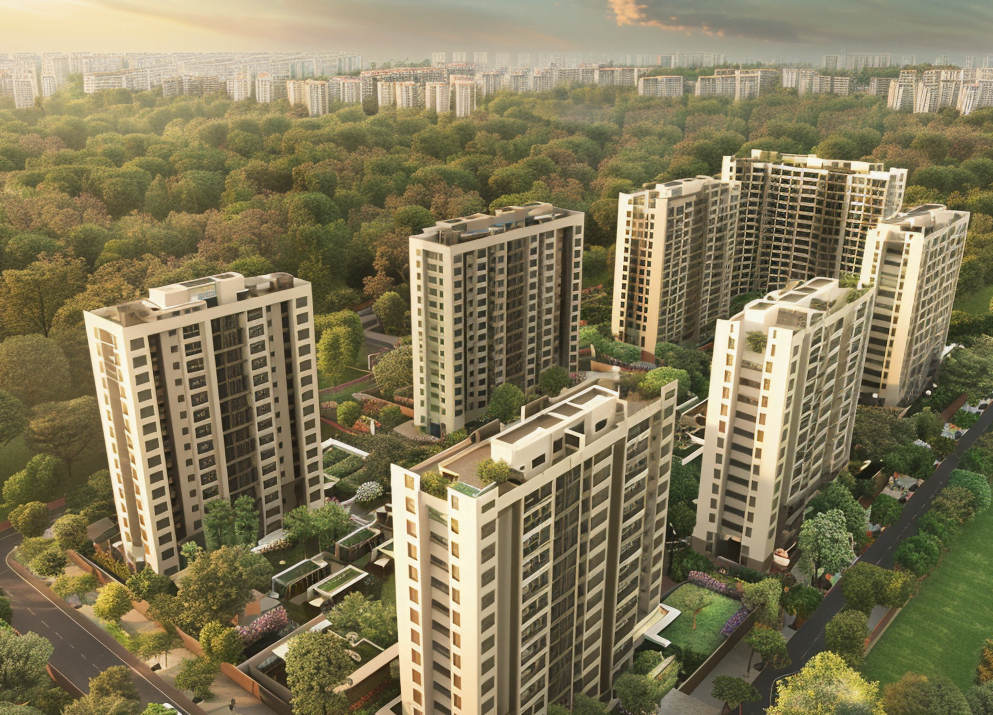In the dynamic realm of construction, mastering the art of building involves understanding the best practices and methodologies tailored to each sector. Residential vs. Commercial Construction highlights the significant distinctions between these two essential areas of the industry. Whether embarking on a commercial venture or constructing a residential abode, adhering to proven strategies ensures project success, mitigates risks, and delivers superior value to clients.

Key Differences Between Commercial and Residential Construction:
| Aspect | Commercial Construction | Residential Construction |
|---|---|---|
| Purpose and Use | Buildings for business purposes, such as offices, retail stores, and warehouses. | Structures primarily intended for habitation, including single-family homes and apartments,. |
| Building Size and Scale | Larger-scale projects with bigger footprints and taller buildings. | Smaller-scale projects with simpler architectural designs. |
| Design Complexity | Often involves more complex designs to accommodate various business needs. | Generally, simpler designs focus on meeting homeowner preferences. |
| Materials and Techniques | Utilizes a wider range of materials and construction techniques. | Typically employs traditional materials such as wood, concrete, and brick. |
| Permits and Regulations | Subject to more stringent building codes, zoning regulations, and permit requirements. | Involves fewer layers of approval and permitting compared to commercial projects. |
| Timeline and Schedule | Tighter timelines driven by business needs and financial considerations. | More flexibility in timelines is influenced by homeowner preferences and weather conditions. |
| Cost and Budgeting | Higher overall costs due to scale, complexity, and specialised requirements. | Lower overall costs compared to commercial projects. |
| Project Management | Requires extensive coordination among multiple stakeholders. | Involves fewer stakeholders and less complex coordination. |
| End Users and Occupancy | End users are typically businesses or organisations. | End users are individual homeowners or tenants. |
| Maintenance and Management | Requires ongoing maintenance to support business operations. | Involves routine maintenance by homeowners or property management companies. |
Impact of Key Differences on Methodology
1. Design and Planning:

- Commercial Construction: Design and planning involve accommodating diverse business needs, ensuring compliance with zoning regulations, and optimizing space for commercial activities.
- Residential Construction: Focuses on creating living spaces that meet homeowner preferences, incorporate lifestyle amenities, and adhere to residential building codes.
2.Materials and Construction Techniques:

- Commercial Construction: Utilizes durable materials and advanced construction techniques suited for high-traffic environments and specialized business requirements.
- Residential Construction: Relies on traditional materials and construction methods tailored to residential building standards and homeowner preferences.
3. Permits and Approvals:

- Commercial Construction: Involves navigating complex permitting processes, securing approvals from multiple regulatory agencies, and ensuring compliance with stringent building codes.
- Residential Construction: Requires obtaining permits for construction activities, adhering to residential zoning regulations, and obtaining approvals from local authorities.
4. Timeline and Scheduling:

- Commercial Construction: Follows tight timelines driven by lease agreements, business operations, and financial considerations, requiring efficient project management and coordination.
- Residential Construction: Offers more flexibility in timelines, allowing for adjustments based on homeowner preferences, weather conditions, and financing arrangements.
5.Cost Management:

- Commercial Construction: Involves managing higher overall costs due to the scale, complexity, and specialized requirements of commercial projects, necessitating careful budgeting and cost control measures.
- Residential Construction: Requires cost-effective planning and budgeting to deliver projects within the constraints of homeowner budgets and financing arrangements.
6. Project Management and Coordination:

- Commercial Construction: Demands extensive project management and coordination among developers, architects, contractors, subcontractors, and regulatory agencies to ensure timely completion and compliance with specifications.
- Residential Construction: Involves coordination between homeowners, architects, and contractors, with homeowners often playing a more active role in decision-making and project management.
7. Quality Assurance and Compliance:

- Commercial Construction: Focuses on meeting stringent quality standards, safety regulations, and industry certifications to ensure the durability, functionality, and compliance of commercial buildings.
- Residential Construction: Emphasizes quality craftsmanship, attention to detail, and compliance with residential building codes to deliver safe, comfortable, and aesthetically pleasing homes.
Advantages and Disadvantages
Residential Construction:
- Advantages:
- Customization: Allows for personalized design and features tailored to individual preferences.
- Community Impact: Enhances local neighborhoods and contributes to community development.
- Flexibility: Greater flexibility in design and budget adjustments.
- Disadvantages:
- Budget Constraints: Limited budgets may restrict design options and material choices.
- Timeline Variability: Construction timelines can be affected by unforeseen issues or changes.
Commercial Construction:
- Advantages:
- Economic Impact: Drives economic growth and business development by creating essential commercial spaces.
- Advanced Design: Incorporates modern technology and design elements to meet business needs.
- Long-Term Investment: Offers potential for significant returns through rental income or business operations.
- Disadvantages:
- Complexity: More complex planning and execution processes.
- Higher Costs: Larger budgets and potential for cost overruns require rigorous cost management.
- Regulatory Challenges: Must comply with strict regulations and standards.
Best Practices in Commercial Construction

1. Comprehensive Pre-Construction Planning:
- Conduct thorough site evaluations, feasibility studies, and risk assessments to identify potential challenges and opportunities.
- Engage key stakeholders, including architects, engineers, contractors, and regulatory authorities, early in the planning process to foster collaboration and alignment.
- Develop a detailed project scope, schedule, and budget, setting clear expectations and milestones for all parties involved.
2. Embrace Sustainable Design and Construction:
- Integrate sustainable practices and green building technologies to enhance energy efficiency, minimize environmental impact, and optimize long-term operational costs.
- Utilize materials with high recycled content, renewable resources, and low embodied carbon to promote environmental stewardship and LEED certification.
- Implement water-efficient fixtures, efficient HVAC systems, and renewable energy solutions to reduce resource consumption and promote occupant comfort.
3. Streamlined Project Management and Execution:
- Implement robust project management methodologies, such as Lean construction and Agile principles, to optimize productivity, minimize waste, and deliver projects on time and within budget.
- Utilize digital project management tools, cloud-based collaboration platforms, and Building Information Modeling (BIM) technology to enhance communication, coordination, and data-driven decision-making.
- Foster a culture of safety, quality, and accountability among project teams through regular training, performance evaluations, and continuous improvement initiatives.
4. Proactive Risk Management and Mitigation:
- Identify potential risks, uncertainties, and contingencies early in the project lifecycle through comprehensive risk assessments and scenario planning.
- Develop proactive risk mitigation strategies, including insurance coverage, contractual protections, and contingency plans, to minimize disruptions and financial liabilities.
- Regularly monitor and evaluate project performance metrics, key performance indicators (KPIs), and leading indicators to identify emerging risks and implement timely corrective actions.
5. Client-Centric Approach and Post-Construction Support:
- Maintain open lines of communication with clients, providing regular updates, progress reports, and opportunities for feedback throughout the construction process.
- Deliver exceptional customer service and post-construction support, including warranty programs, maintenance agreements, and facility management services, to ensure client satisfaction and long-term success.
- Establish lasting relationships with clients, subcontractors, and industry partners through integrity, professionalism, and a commitment to exceeding expectations.
Best practices in Residential Construction

1. Customized Design and Personalization:
- Collaborate closely with homeowners, architects, and interior designers to develop personalized design concepts, floor plans, and material selections that reflect the client’s lifestyle, preferences, and budget.
- Utilize advanced visualisation tools, 3D modelling software, and virtual reality (VR) technology to showcase design options, simulate spatial layouts, and facilitate informed decision-making.
- Incorporate universal design principles, accessibility features, and aging-in-place considerations to enhance comfort, safety, and usability for occupants of all ages and abilities.
2. Quality Craftsmanship and Attention to Detail:
- Employ skilled tradespeople, artisans, and craftsmen with expertise in carpentry, masonry, plumbing, electrical work, and finishing trades to ensure superior craftsmanship and attention to detail.
- Source high-quality materials, fixtures, and finishes from reputable suppliers and manufacturers known for durability, performance, and aesthetic appeal.
- Implement rigorous quality assurance and quality control processes, including onsite inspections, third-party testing, and peer reviews, to verify compliance with industry standards and client specifications.
3. Efficient Project Management and Timely Delivery:
- Develop detailed project schedules, critical path analyses, and milestone tracking systems to monitor progress, anticipate bottlenecks, and optimise resource allocation.
- Coordinate closely with subcontractors, suppliers, and vendors to ensure timely delivery of materials, equipment, and labor resources according to project timelines and specifications.
- Anticipate and proactively address potential challenges, delays, and scope changes through effective communication, risk management, and contingency planning.
4. Sustainable Building Practices and Energy Efficiency:
- Integrate energy-efficient building systems, insulation materials, and passive design strategies to minimize energy consumption, reduce utility costs, and enhance indoor comfort.
- Promote indoor air quality, thermal comfort, and occupant well-being through proper ventilation, moisture management, and daylighting strategies.
- Educate homeowners on sustainable living practices, energy-saving technologies, and green building certifications to empower them to make informed decisions and reduce their environmental footprint.
5. Ongoing Maintenance and Homeowner Education:
- Provide homeowners with comprehensive maintenance guidelines, warranty information, and emergency contact resources to support the ongoing care and upkeep of their properties.
- Conduct post-construction walkthroughs, inspections, and performance evaluations to address any deficiencies, defects, or warranty claims in a timely and professional manner.
- Offer continuing education and support services, such as home maintenance workshops, online resources, and community forums, to empower homeowners to maintain and enhance the value of their investments.
Examples
Residential Construction Examples in India:
- Affordable Housing Projects: Initiatives aimed at providing cost-effective housing solutions for low- and middle-income families.
- Luxury Villas: High-end residential properties featuring premium amenities and bespoke designs.
- High-Rise Apartment Buildings: Multi-story buildings designed to accommodate a large number of residents in urban areas.
Commercial Construction Examples in India:
- IT Parks: High-tech office spaces designed for IT and technology companies, featuring advanced infrastructure and amenities.
- Shopping Malls: Large retail complexes offering a variety of shopping, dining, and entertainment options.
- Business Centers: Multi-purpose office buildings that provide flexible workspace solutions for businesses of all sizes.
Conclusion
In conclusion, mastering the art of construction requires a deep understanding of the best practices and methodologies tailored to each sector’s unique requirements and challenges. Whether embarking on a commercial venture or constructing a residential abode, stakeholders must embrace sustainable design, streamline project management, prioritize quality craftsmanship, and deliver exceptional customer service to achieve project success and client satisfaction. By adhering to proven strategies, leveraging innovative technologies, and fostering collaboration among all project stakeholders, construction professionals can build a brighter, more sustainable future for generations to come.






